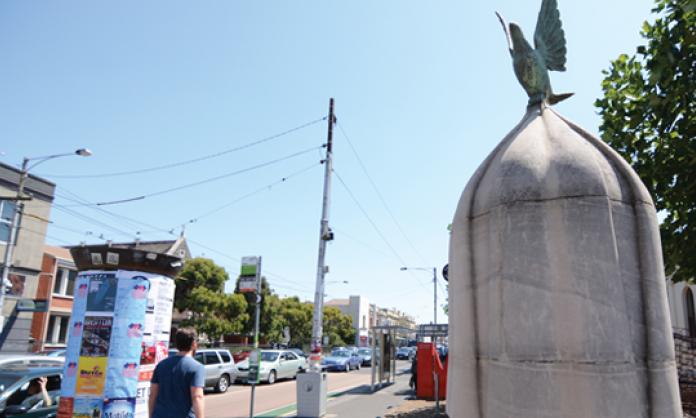Areas such as Brunswick, in Melbourne’s inner north, have long fallen prey to gentrification. The working class and migrant communities have gradually been squeezed out.
According to Victoria’s Department of Transport, Planning and Local Infrastructure, 40 years ago, about two-thirds of Brunswick houses were priced in the bottom 25 percent of all houses in Melbourne. By 2007, more than 90 percent were in the top 50 percent.
Walking down Sydney Road, it’s hard to imagine that the pubs in the area were sites of rebellion and historical significance. Many of them were built in the 1850s to accommodate the gold rush population explosion.
Laura Donati’s Almost pretty: a history of Sydney Road provides at least a superficial glance at some of this history. In 1896, outside the Sarah Sands Hotel (now Bridie O’Reilly’s), some 20,000 Irish and Catholics confronted and battled loyalist Protestants during their annual Orange march.
In the 1930s, the Communist Party led the fight to defend free speech against repressive state laws prohibiting street corner speak-outs, culminating in an impressive campaign of civil disobedience outside the Retreat Hotel.
As recently as 1994, anti-racists stood up to the neo-Nazi outfit National Action after the Sarah Sands shamefully permitted them to use the pub as their local. The Nazis were chased off Sydney Road and into Jewell Station.
I’ve been a bartender for many years and worked a number of joints up and down Sydney Road. Without doubt, my favourite regular at my last job was an old bloke called Les. He’d hobble in every day at lunchtime with his walking frame and sit in the corner, sipping light beer while listening to his radio – always the races, which he’d bet on.
People like Les are the ones being forced out. He certainly didn’t make management’s desired clientele list. He’s what you might call “old Brunswick”. The last time I bumped into him he told me he had to find another local, after my boss had shortened his trading hours to cut back on staff wages.
While heartbreaking, it was also rage inducing. All up Sydney Road, the pubs have been done up and the beer prices raised to push out old Brunswick and attract a more wealthy clientele. Behind this stand soaring property prices and a lack of public housing.
One of the participants in the Depression-era free speech campaign was artist and committed communist Noel Counihan, who notoriously gave a speech outside the Retreat from an iron cage bolted to a horse-drawn cart. It took the cops a while to pry him out and arrest him.
Today, Moreland City Council concedes: “Counihan was deeply committed to the predicament of the underprivileged in society”. It would serve us well not only to remember activists like Counihan, but also the workers who built, ran, lived and fought in places such as Brunswick.
But maybe there’s hope. This year, a pub in Paddington, a former working class suburb of Sydney, banned hi-vis vests – the kind that miners and road workers wear. The resulting social media backlash gave a glimpse of a spirit that still lives:
“Another wanker hipster establishment, imitating trends instead of creating them, discriminating against workers because all you want is idiots with beards and pretentious tattoos?”
“Well if tradies aren’t allowed in, who is going to fix the electrics, plumbing … Who is going to deliver the kegs, the wine and spirits and the quinoa?”
“Get ready for all the hate mail … Us Hi-viz. workers stick together !!! United we stand.”








